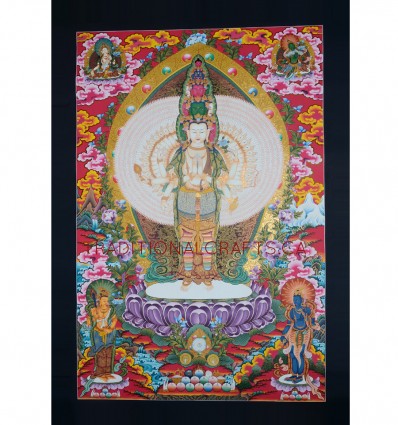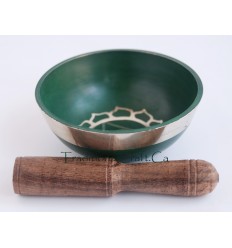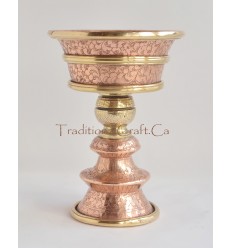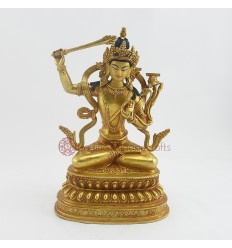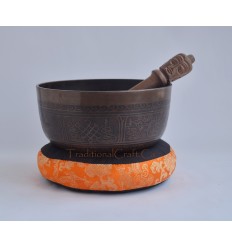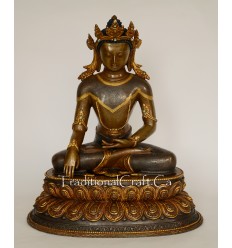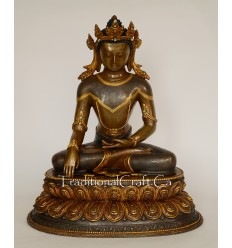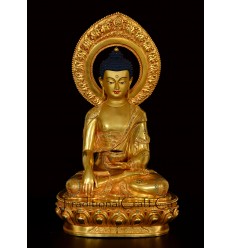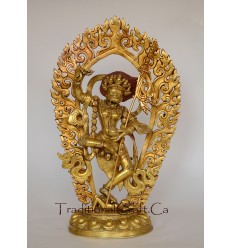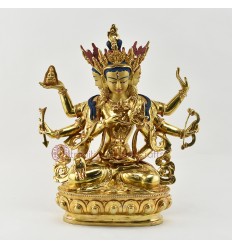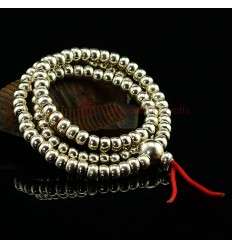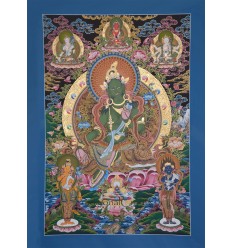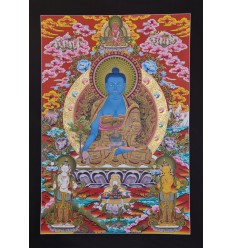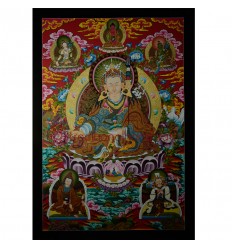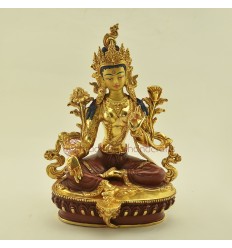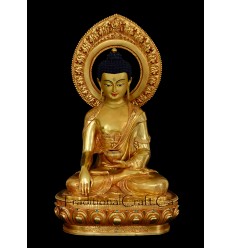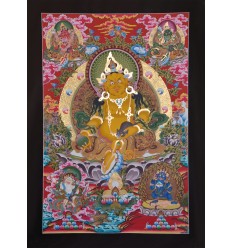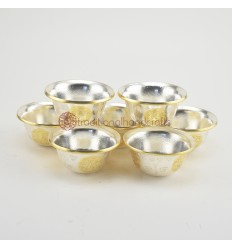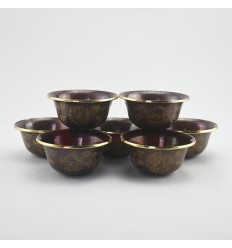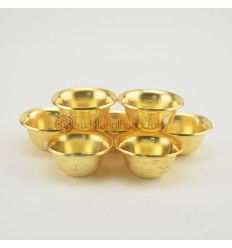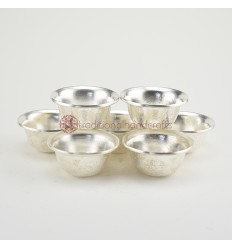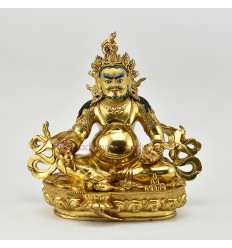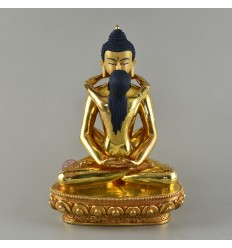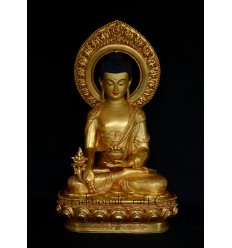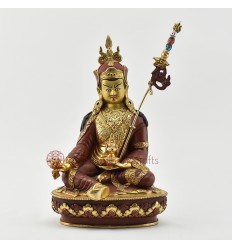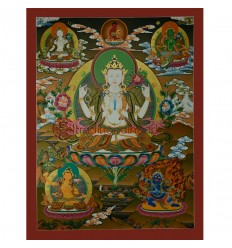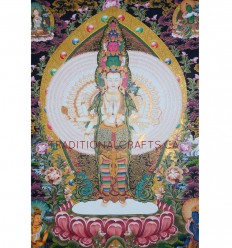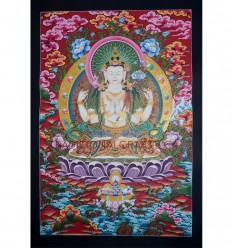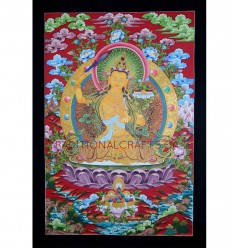No products
Product successfully added to your shopping cart
There are 0 items in your cart. There is 1 item in your cart.
32.75" x 23" Avalokiteshvara Tibetan Buddhist Gold Thangka Scroll Painting Nepal
New
32.75" x 23" Avalokiteshvara Tibetan Buddhist Gold Thangka Scroll Painting Nepal
1 Item
Warning: Last items in stock!
| Name | 1000 Armed Avalokiteshvara/Chenrezig Thangka Painting |
| Size with Border | 32.75" Long x 23" Wide |
| Size without Border | 30" Long x 20" Wide |
| Material | Original Hand-Painted Cotton Canvas with 24 Karat Gold Detailing |
| Style | Tibetan |
| Weight | 0.3 kg / 0.66 lbs. |
| Ships From | Bhaktapur, Nepal |
| Shipping Provider | DHL Global Priority Express |
| Shipping Time | Usually ships within 48 hours. Allow 3-5 business days for delivery worldwide. |
| InsuranceInsurance is included in the shipping cost. | |
Avalokiteshvara (Guan Yin in Chinese; Chenrezig in Tibetan; Kannon in Japanese) is the Bodhisattva of Compassion. Among the Bodhisattvas, it is Avalokiteshvara who has the largest number of forms and is perhaps the most venerated and most popular Buddhist deity. His sex, originally masculine, is sometimes considered feminine in China and Japan, although this discrimination is unsupported by any canonical text and was often considered in China and Japan as the 'mother of the human race' and, in this respect, worshipped in the form of a woman.
Among the 108 forms of Lokiteshvara, Avalokiteshvara is one who refuses to accept Nirvana since he considers such acceptance selfish in view of the ignorance of the great majority of the people who have not yet attained that stage. His sacrifice symbolizes infinite compassion (Karuna), sharing of mankind's misery, willingness to help those in distress. Avalokiteshvara holds in his hand the indestructible jewel. He is savior and protector from danger. So, his invocation (Mantra) “OM MANI PADME HUM” is found inscribed on rocks, loose stones, prayer wheels, etc
Avalokiteshvara is known from very early in the development of the Mahayana doctrines and, until Buddhism disappeared from India, enjoyed great favor there. His cult passed from India to South-East Asia and Java, where it met with great success, and also in Nepal, Tibet (where he arrived with Buddhism and where King Srong - Tsong Gampo, 519-650, was considered to be his incarnation), and in China, from where he went on to Korea and Japan. All these countries imagined him in different forms according to their own temperaments and spirituality.
No customer comments for the moment.


